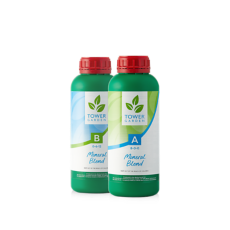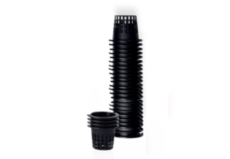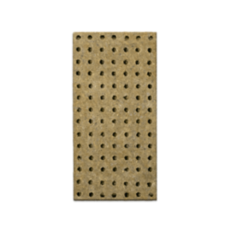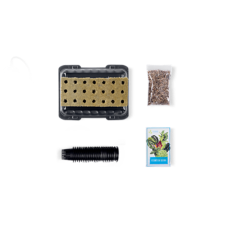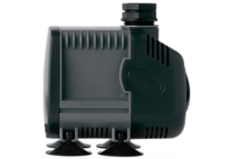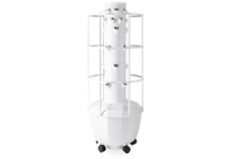Autumn Tower Gardening
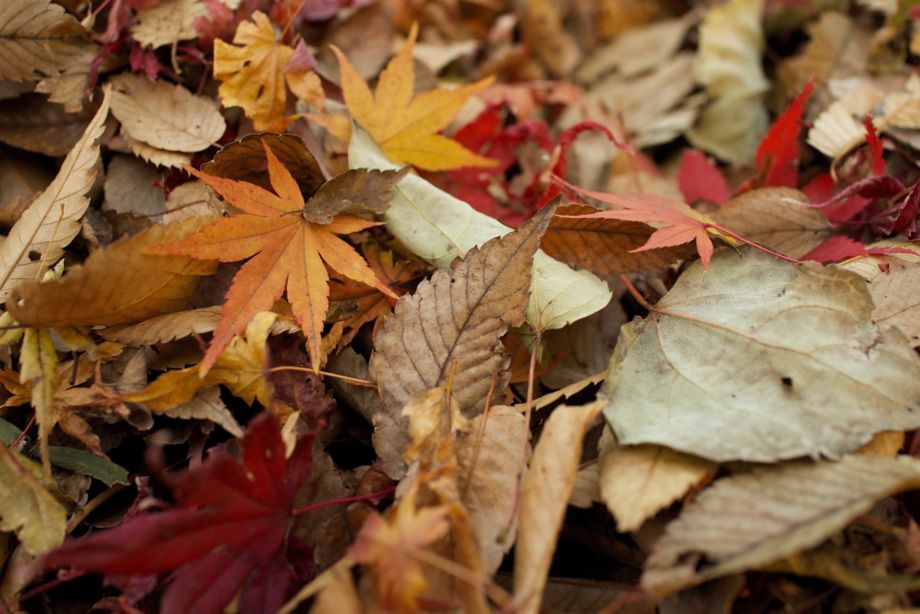
When it comes to growing fruits, vegetables, herbs, and more outdoors, each season provides gardeners with new opportunities (as well as some new challenges). With cooler temperatures and fewer pests, the Autumn season can actually provide some of the year’s best growing conditions.
With the right plan, right crops, and right accessories, you can enjoy fresh, delicious harvests all season long with Tower Garden. In this guide, we’ll walk you through how to make the most of your Autumn garden.
Tower Tip: If the outdoor elements become too harsh for your crops, remember that you can always grow indoors with LED Indoor Grow Lights.
Preparing for a Successful Autumn Season
As with any season, the best way to succeed is to plan ahead. Therefore, start prepping for the perfect Autumn garden as early as August. When planning, think about the crops you want to grow, the supplies you’ll need, and how you’ll deal with various weather-related obstacles that may arise.
Understanding the First Frost Date
When planning your Autumn garden, the most important detail to consider is frost — or more specifically, when the first frost is likely to hit. (This, of course, assumes your area experiences frost.)
Tower Tip: Not sure when the first frost date is in your area? Do an online search.
Follow these two simple steps to help ensure your plants reach maturity before they’re stunted or killed by cold weather:
- Identify the number of days until harvest for the crop you’d like to grow. This information is often included on the back of seed packets and seedling labels. (If you don’t have seedlings on hand, check seed provider catalogues or websites for this info.)
- Using that number, count backward from your first frost date. The resulting date is when you should plant. (If you don’t want to do the maths in your head, this calculator makes it easy.) You may want to add a week or so to give yourself a little breathing room.
For example, let’s imagine your first frost date is November 13, and you want to grow Swiss chard in the Autumn. Knowing that this leafy green takes roughly 60 days to harvest, you should plant your chard no later than September 14. Repeat this step with each crop to ensure success.
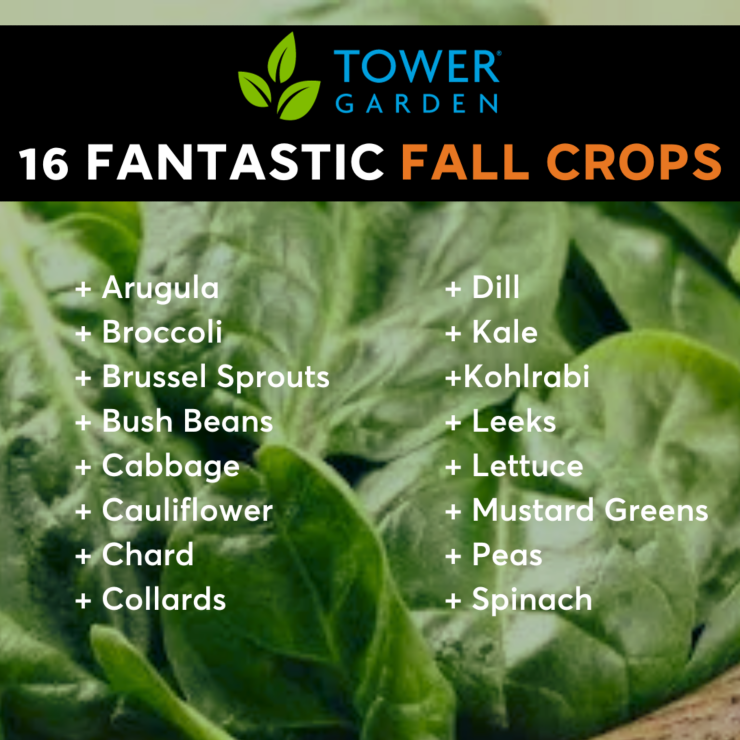
Picking the Perfect Autumn Crops
When determining which crops you’ll grow outdoors in the Autumn, it’s crucial to consider each crop's unique growing conditions. For example, tomatoes, peppers, and other fruiting crops may thrive in the long, warm days of summer but struggle once the days become shorter and cooler.
Plants that thrive in cool weather include:

Gathering All Your Supplies
After a summer of growing, you’re likely running low on the essentials, such as Mineral Blend and rockwool cubes. Restock on the growing supplies you need now so you’re not wishing you had come October. You don’t want to start your Autumn garden late simply because you’re waiting for a shipment to arrive, right? That delay could mean losing your Autumn harvest to frost.
It’s also worth investing in some organic, environment-friendly pest sprays (or better yet, make your own). While bugs aren’t as big of an issue once temperatures drop, it’s always a good idea to have some spray on hand.
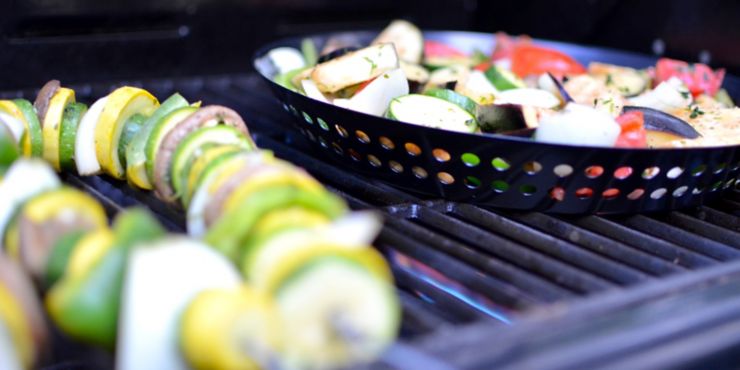
Harvesting Your Summer Crops
Once your cool season crops have grown into strong, eager seedlings, you can transplant them. To make sure that there’s plenty of room for your new, cool season crops to grow, it’s important to harvest all remaining summer crops when they are ready.
Start by picking all the ripe produce you can find (and enjoy your delicious, fresh feast). As you’re harvesting, remember to save seeds from the plants you’d like to grow again next year. For crops that aren’t quite ready, discover these handy tips to get your Tower Garden crops to ripen faster. Tomatoes will even ripen off the plant.
Cleaning Your Tower Garden
After you’ve picked your summer plants bare, remove them from your Tower Garden. But before you transplant your new seedlings, you should clean the growing system to reduce the risk of a pest or disease outbreak in the Autumn.
When it comes to cleaning, you have options:
- Quick wipe down: If your Tower Garden isn’t too dirty from the summer growing season, it may need nothing more than a light wipe down with a damp rag. (This is also a good option if you plan to do a more thorough cleaning before moving your Tower Garden inside for the winter.)
- Full-system cleaning: If you’re feeling ambitious, disassemble your Tower Garden and perform a comprehensive cleaning. It’s good to do this at least a couple of times a year.
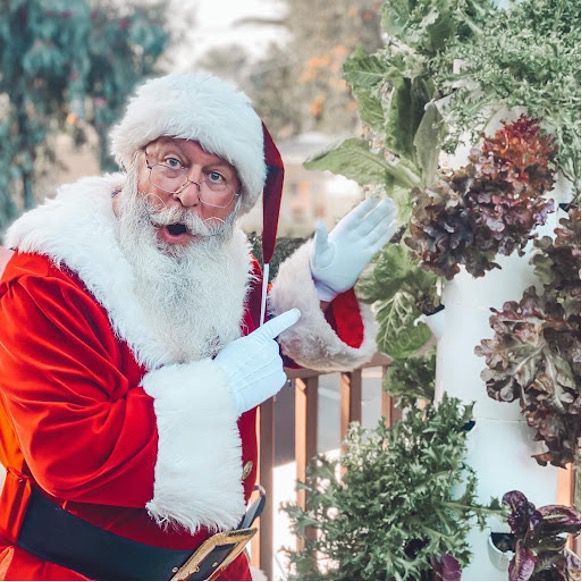
Accessories to Extend the Season
Toward the end of Autumn and into early winter, temperatures may drop below what your plants find comfortable. Here are three ways you can keep your Tower Garden warm and prevent plant shock.
Greenhouse
From inexpensive pop-ups to automated, permanent structures, you have a wide range of greenhouses to choose from. These structures provide gardens with consistent, controlled environments that make year-round growing easy. This option is perfect for those with room in their Garden, and who also have other plants they’ll want to keep safe during the winter.
Learn more about greenhouse growing with Tower Garden!
Submersible Heater
This is an inexpensive fix for cold weather, as a simple aquarium heater will do the trick. Configure the heater so that it maintains a water temperature in the 65–85°F (18–29°C) range.
Enjoy Your Autumn Growing
We hope this checklist has been helpful! As a recap, to prepare for Autumn:
- Select and start your Autumn crops
- Secure growing supplies
- Harvest remaining summer produce
- Clean your Tower Garden
- Invest in season-extending accessories

